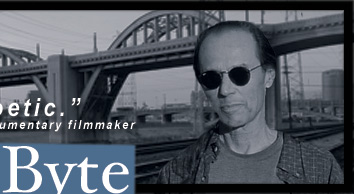
 |
I Meant to Do That
I intend to make mistakes. You should, too. In her effort to restore the painting (which wasn’t exactly a classic), Cecilia transformed the old-school Christ into an international icon of disfigurement — the smudge stick messiah, Botox Jesus, a Stuffed Nylon Stocking Prince of Peace. But lo, like a heavenly being, Monkey Jesus took wing. The disfigured painting became, thanks to an online audience, a tourist attraction and a profitable highly-recognizable brand image. The Sancti Spiritus foundation that owns the church where Monkey Jesus lives, started charging a one euro admission for viewing privileges. An online petition to save Cecilia’s work called her brushstrokes, “a clever reflection of the political and social situation of our time.” Heaven help us. With a facebook fan page, reproductions of Monkey Jesus became available on T-shirts, cellphone covers, coffee mugs, wine labels, caps, underwear, and pillow cases. Meanwhile, Cecilia began thinking she deserved a cut of this action. Her artwork (if you’ll excuse the expression) was now infinitely more celebrated than the original. So, Cecilia hired lawyers to look into possible copyright infringement. If she has rights to Monkey Jesus, Cecilia Gimenez could pursue payments from anyone using her Christ redo to sell products. Can Monkey Jesus be considered art? Can a mistake be considered art? Of course it can. Today, a good deal art is a mistake. It’s a recovery from an inability to achieve perfection — sometimes it’s a happy accident. Art is an emotion. As long as you say it is, it is. To make art, all you need is intent. I meant to do that. In 1917, Marcel Duchamp, the hot shot Dadaist, purchased a standard porcelain urinal from the J. L. Mott Iron Works, in New York. Duchamp turned the urinal sideways wrote "R. Mutt 1917” on it and entitled the piss pot, The Fountain. That readymade is arguably the most famous piece of 20th century art. Duchamp once said, “the creative act is not performed by the artist alone; the spectator brings the work in contact with the external world by deciphering and interpreting its inner qualification and thus adds his contribution to the creative act.” So, art is not completely the artist’s fault. You, the viewer, participate in its creation. Cecilia Gimenez did not create Monkey Jesus on her own. No way. Online spectators around the world pitched in. All she did was take responsibility. Even though she didn’t know what she was doing, she meant to do that. And just like that, art is everywhere. Wayne White paints text over thrift store-bought landscape art. Ai Wei Wei paints the Coca Cola logo on a Neolithic age vase. Andy Warhol painted Brillo Boxes. Los Angeles-based artist Wild Life creates new city art landmarks by hanging a plaque near a dumpster or a group of palm trees, attributing the scene to Gary Burden or Yoko One or Jean Michael Basquiat. Art appears. To be artists we need only remember to take responsibility for everything we do. Preface your life with “I meant to do that.” Did Cecilia mean to make her mistake? I hope so. — Nathan
Callahan © NathanCallahan.com / Nathan Callahan / all rights reserved |
Broadcasting Fridays at 8:50 am from KUCI 88.9 fm Orange County, California
|